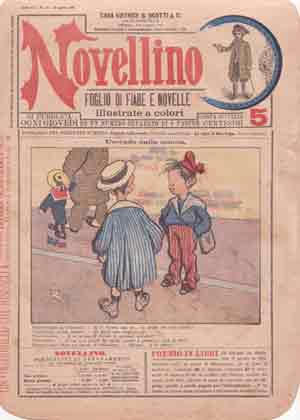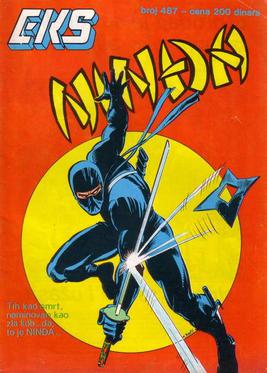Related Research Articles
Notable events of 1997 in comics.

Italian comics, also known as fumetto, plural form fumetti, are comics that originate in Italy. The most popular Italian comics have been translated into many languages. The term fumetto refers to the distinctive word balloons that contain the dialogue in comics.
Notable events of 1950 in comics.
Éditions Lug was a French comic book publisher created in 1950 by writer/editor Marcel Navarro and businessman Auguste Vistel. In 1989, Éditions Lug was sold to the Semic Group / Semic Press, a Scandinavian comic book publisher, and later became a French company, Semic Comics.

EsseGesse was an Italian team of cartoonists, most famous for their Western comics, which were popular in the 1950s. The comics were translated to French, Serbo-Croatian, Turkish, Greek, Swedish, Danish and Norwegian.
Serbian comics are comics produced in Serbia. Comics are called stripovi in Serbian and come in all shapes and sizes, merging influences from American comics to bandes dessinées.
Notable events of 1966 in comics.
Notable events of 1953 in comics.
Notable events of 1967 in comics.
Notable events of 1954 in comics.

Western comics is a comics genre usually depicting the American Old West frontier and typically set during the late nineteenth century. The term is generally associated with an American comic books genre published from the late 1940s through the 1950s. Western comics of the period typically featured dramatic scripts about cowboys, gunfighters, lawmen, bounty hunters, outlaws, and Native Americans. Accompanying artwork depicted a rural America populated with such iconic images as guns, cowboy hats, vests, horses, saloons, ranches, and deserts, contemporaneous with the setting.
George Pol. Papadakis is a Greek poet, writer and mathematician who was born in Athens. He also deals with literary criticism.
Q strip was a Croatian comic book magazine edited by Darko Macan. It specializes in good quality Croatian comics which are often accompanied by notable comics from all over the world. The first issue was released on 18 July 2003. The last issue was released in 2013.

Vladimir Krstić, known by the pseudonym Laci, is an internationally published Serbian comic-book and graphic novel creator, painter, and illustrator.
Notable events of 1932 in comics.

Ninja was a Yugoslav comic strip published by Dečje novine. Created in 1986, it was based on the series of pulp novels of the same name written by Yugoslav writer Brana Nikolić.

Sibin Slavković is a Serbian comic book artist, illustrator and editor.
Branko Plavšić was a Serbian comic book artist, best known for his work on Tarzan and Blek.
Nikola Maslovara Masli (Serbian Cyrillic: Никола Масловара Масли, Odžaci, 22 December 1946) is a Serbian comics creator, cartoonist, caricaturist, scriptwriter, animator, editor, publisher, and art teacher.
References
- ↑ "EsseGesse". lambiek.net. Retrieved 2017-11-07.
- ↑ "uBC". www.ubcfumetti.com. Retrieved 2017-11-11.
- ↑ "Jean-Yves Mitton". lambiek.net. Retrieved 2017-11-11.
- ↑ "André Amouriq". lambiek.net. Retrieved 2017-11-11.
- ↑ "Veliki Blek - Enciklopedija - www.stripovi.com - Prozor u svijet stripa". www.stripovi.com (in Croatian). Retrieved 2017-11-11.
- ↑ "Mikros Iros" editions Retrieved on March 12th, 2021
- ↑ Piccioni, Giuseppe, Il grande Blek, Roberto De Francesco, Sergio Rubini, Federica Mastroianni, retrieved 2017-11-07